Evolutionary Ecology
The department of Evolutionary Ecology gathers complementary skills in behavioural ecology, population dynamics, population biology, community ecology, and methodology (statistics and modelling). The research done in the department aims at studying how animal species evolve in a changing world by understanding the causes of the evolution of traits, adaptations and interactions. For that, we consider different levels of organization from individuals to populations and communities. Because organisms cannot be considered isolated from other biotic factors, we consider pathogens but also competing species within communities.
We study how individuals adapt to their environments that are largely impacted by anthropic pressures, and how life history traits and behaviour evolve in response to these pressures. Although we mainly focus on phenotype, we more and more consider the mechanistic link between the genotype and the phenotype. We develop the theoretical framework of our discipline through a conceptual and modeling approach. In parallel, we test hypotheses that arise from theoretical predictions through experimental, comparative and observational approaches on different biological models (insects, birds, mammals). Experimental approaches are developed in the laboratory (insect model) and in natura (bird, insect and mammal models). Observational and comparative research is mainly concerned with vertebrates. Our approaches are also, and increasingly, interested in the mechanisms of adaptive responses. In addition to the classical approaches of demographic analysis and trait change, methods of ecophysiology, chemical ecology and molecular biology are used.
Our department hosts several long-term studies of wild populations of different species. These long-term studies offer a valuable way to understand how biotic and abiotic factors affect individuals’ life history traits, and the functioning of populations in natura. Five populations of mammalian species are thus monitored for several years (more than 40 years on roe deer, 30 on Alpine marmots, 25 years on cats, 16 years on zebras, and 20 years on impala). Two of our study sites (La Sassière in Vanoise National Park (Alpine marmots) and Hwange National Park) have been certified as “Site d’Etude en Ecologie Globale” (SEEG), and two (ZA “Hwange” and ZA “Antarctic and sub-Antarctic”) were certified as “Zone Atelier” by the CNRS.
The department of Evolutionary ecology is also largely involved in training activities. Lastly, we also have strong socio-economic relationships. Indeed, because we address questions of major societal interest (global warming, public health) we tightly collaborate with socio-economic partners (Office Français de la Biodiversité, Vanoise National Park, Hwange National Park in Zimbabwe, Office National des Forêts, etc.) and participate to general public and media events.
Publications
Display of 1981 to 2010 publications on 2483 in total
Influence du type de sol et du mode d’occupation des sols sur la quantité d’ADN extraite et la densité des communautés bactériennes indigènes
AFEM (Association Francophone d'Ecologie Microbienne) . : n.p.
Poster
see the publicationMicrobiogéographie à l'échelle du territoire national
AFEM (Association Francophone d'Ecologie Microbienne) . : n.p.
Conference paper
see the publicationBiological control of Striga hermontica by Cubiterms mound powder amendment in sorghum culture
Applied Soil Ecology . 37 ( 3 ) : 175-183
Journal article
see the publicationImprovement of Cupressus atlantica Gaussen growth by inoculation with native arbuscular mycorrhizal fungi
Journal of Applied Ecology . 103 : 683-690
Journal article
see the publicationDetection of recombinant human erythropoietin in urine for doping analysis: interpretation of isoelectric profiles by discriminant analysis
Electrophoresis . 28 ( 12 ) : 1875-1881
Journal article
see the publicationDynamique d'un système hôte-parasitoïde en environnement spatialement hétérogène et lutte biologique Application au puceron Aphis gossypii et au parasitoïde Lysiphlebus testaceipes en serre de melons
Thesis
see the publicationConsensus genetic structuring and typological value of markers using multiple co-inertia analysis
Genetics Selection Evolution . 39 : 545-567
Journal article
see the publicationEvolution of an invasive rodent on an archipelago as revealed by molar shape analysis: the house mouse in the Canary Islands
Journal of Biogeography . 34 ( 8 ) : 1412-1425
Journal article
see the publicationQuantitative conodont-based approaches for correlation of the Late Devonian Kellwasser anoxic events
Palaeogeography, Palaeoclimatology, Palaeoecology . 250 : 114-125
Journal article
see the publicationArbuscular mycorrhizal symbiosis can counterbalance the negative influence of the exotic tree species Eucalyptus camaldulensis on the structure and functioning of soil microbial communities in a sahelian soil
FEMS Microbiology Ecology . 62 ( 1 ) : 32-44
Journal article
see the publicationSmall but smart: the interaction between environmental cues and internal state modulates host-patch exploitation in a parasitic wasp
Behavioral Ecology and Sociobiology . ( 61 ) : 1409-1418
Journal article
see the publicationQuantitative risk assessment of listeria monocytogenes in french cold-smoked salmon: I. quantitative exposure assessment
Risk Analysis . 27 ( 3 ) : 683-700
Journal article
see the publicationInfectivity of Histomonas meleagridis in ducks
Avian Pathology . 35 ( 2 ) : 109-116
Journal article
see the publicationPopulation dynamics of grayling : modelling temperature and discharge effects.
Mathematical Modelling of Natural Phenomena . 1 ( 1 ) : 33-48
Journal article
see the publicationA multi-patch epidemic model with periodic demography, direct and indirect transmission and variable maturation rate
Mathematical Population Studies . 13 ( 3 ) : 153-177
Journal article
see the publicationPotential of a 16S rRNA-based taxonomic microarray for analyzing the rhizosphere effects of maize on Agrobacterium spp. and bacterial communities
Applied and Environmental Microbiology . 72 ( 6 ) : 4302-4312
DOI: 10.1128/AEM.02686-05
Journal article
see the publicationBiological effects of native and exotic plant residues on plant growth microbial biomass and N availability under controlled conditions
European Journal of Soil Biology . 42 : 238-246
Journal article
see the publicationLitter-forager termite mounds enhance the ectomycorrhizal symbiosis between Acacia holosericea A. Cunn. Ex G. Don and Scleroderma dictyosporum isolates
FEMS Microbiology Ecology . 56 : 292-303
Journal article
see the publicationA multivariate approach to integrating Datasets using made4 and ade4
R News . -- : 1-15
Journal article
see the publicationDisplacement of an herbaceous plant species community by mycorrhizal and non-mycorrhizal Gmelina arborea, an exotic tree, grown in a microcosm experiment
Mycorrhiza . 16 ( 2 ) : 125-132
Journal article
see the publicationThe Ectomycorrhizosphere Effect Influences Functional Diversity of Soil Microflora
International Journal of Soil Science . 1 : 8-19
Journal article
see the publicationDevelopment of cellular immune responses to Plasmodium falciparum blood stage antigens from birth to 36 months of age in Cameroon
Acta Tropica . 98 : 261-269
Journal article
see the publicationTESD : a transposable element dynamics simulation environment
Bioinformatics . 22 : 2702-2703
Journal article
see the publicationMate-guarding strategies and male competitive ability: results from a field study in an orb-weaving spider
Animal Behaviour . 71 : 1315-1322
Journal article
see the publicationDynamic optimization over infinite-time horizon: Web-building strategy in an orb-weaving spider as a case study
Journal of Theoretical Biology . Volume 241 ( Issue 4 ) : Pages 725-733
Journal article
see the publicationModeling and Predicting the Simultaneous Growth of Escherichia coli O157:H7 and Ground Beef Background Microflora for Various Enrichment Protocols
Applied and Environmental Microbiology . 72 : 261-268
Journal article
see the publicationSerotyping of Toxoplasma gondii in chronically infected pregnant women: predominance of type II in Europe and types I and III in Colombia (South America).
Microbes and Infection . 8 ( 9-10 ) : 2333-40
Journal article
see the publicationUV-Targeted Dinucleotides Are Not Depleted in Light-Exposed Prokaryotic Genomes
Molecular Biology and Evolution . 23 : 2214-2219
Journal article
see the publicationHow does environmental variation influence body mass, body size, and body condition? Roe deer as a case study.
Ecography . 29 ( 3 ) : 301–308
Journal article
see the publicationDensity-dependent responses of fawn cohort body mass in two contrasting roe deer populations
Oecologia . 146 ( 4 ) : 521-530
Journal article
see the publication
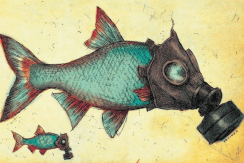
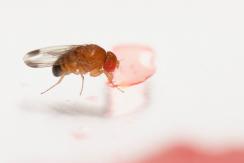
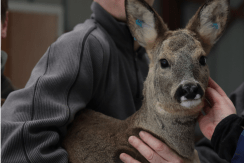
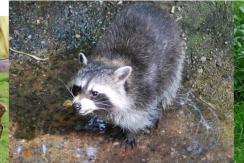
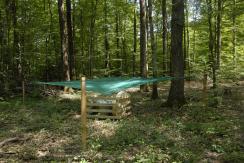
You also, comment on this article